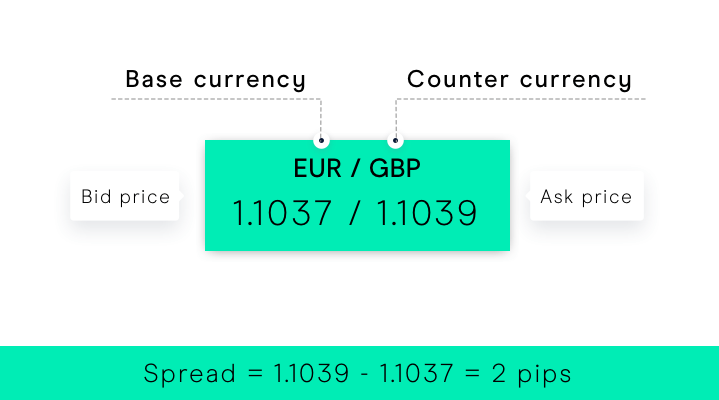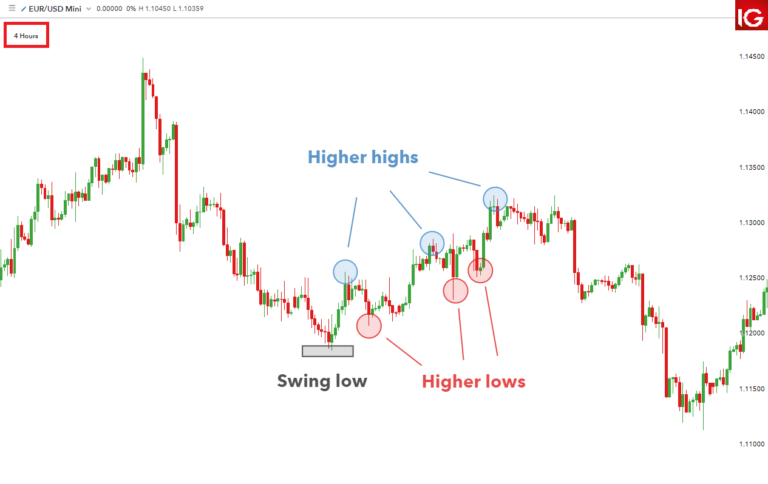Introduction
Forex trading is a dynamic and complex endeavor, where understanding the balance between risk and reward is paramount for success. In this article, we’ll delve into the intricacies of risk management, various trading strategies, technical and fundamental analysis, as well as the psychological aspects involved. By the end, you’ll have a comprehensive understanding of how to master the art of risk to reward in forex trading.
Understanding Risk and Reward in Forex Trading
At its core, forex trading revolves around the concept of risk and reward. Every trade involves a certain level of risk, which is the potential loss incurred if the trade doesn’t go as anticipated. On the flip side, there’s the potential reward, which represents the profit that can be gained if the trade is successful. The key is to strike a balance between these two factors to achieve consistent profitability.
The Importance of Risk Management
Effective risk management is not just a good practice in forex trading; it’s the bedrock upon which successful trading careers are built. It goes beyond simply acknowledging the existence of risks; it’s about actively assessing and mitigating them to safeguard your trading capital and ensure sustained profitability over the long term.
The fundamental principle of risk management is to never expose more capital to risk than you can afford to lose on any single trade. This principle serves as a protective barrier, shielding your trading account from the potential devastation of significant losses. By adhering to this rule, you preserve your capital and maintain the financial resources necessary to continue trading and capitalize on future opportunities.
One of the primary objectives of risk management is capital preservation. Preserving your trading capital is essential for weathering inevitable market fluctuations and unforeseen events. It acts as a safety net, allowing you to absorb losses without jeopardizing your ability to continue trading effectively. Without adequate risk management measures in place, even a series of small losses can quickly deplete your capital, leaving you unable to recover and forcing you out of the market prematurely.
Furthermore, effective risk management enables traders to maintain emotional stability and discipline in the face of adversity. Fear and anxiety can cloud judgment and lead to impulsive decisions, such as revenge trading or chasing losses. By implementing risk management strategies, traders can mitigate emotional responses to losses and maintain a rational approach to trading. This helps prevent emotional decision-making and fosters a mindset focused on long-term success rather than short-term gains.
In addition to preserving capital and promoting emotional stability, risk management also contributes to overall trading consistency and profitability. By carefully controlling the amount of capital allocated to each trade and setting appropriate stop-loss levels, traders can limit the impact of losses on their overall portfolio. This allows them to maintain a consistent risk-to-reward ratio and avoid the pitfalls of overexposure to market volatility.
Moreover, effective risk management encourages traders to approach forex trading with a strategic mindset. Rather than relying on luck or intuition, traders who prioritize risk management are more likely to develop well-defined trading plans and adhere to disciplined trading strategies. They understand the importance of thorough analysis, proper position sizing, and realistic risk assessment in achieving their trading goals.
In conclusion, risk management is not just a peripheral aspect of forex trading; it’s the cornerstone of success. By prioritizing capital preservation, emotional stability, consistency, and strategic planning, traders can mitigate risks and maximize their chances of long-term profitability. Whether you’re a novice trader or an experienced professional, integrating robust risk management practices into your trading approach is essential for navigating the challenges of the forex market and achieving sustainable success.
Different Trading Strategies for Managing Risk and Maximizing Rewards
In the vast landscape of forex trading, traders have access to a plethora of strategies, each offering unique approaches to managing risk and maximizing rewards. Understanding these strategies, their underlying principles, and how they align with your individual risk tolerance, trading style, and financial objectives is essential for success in the dynamic forex market.
- Trend Following: Trend following is a popular strategy that involves identifying and trading in the direction of established market trends. Traders look for patterns of price movement that indicate a clear upward or downward trend and enter positions in alignment with the trend’s direction. This strategy aims to capitalize on sustained price movements over time, riding the trend until signs of reversal emerge. By following established trends, traders can potentially capture significant profits while minimizing the risk of counter-trend trading.
- Range Trading: Range trading, also known as mean reversion trading, involves identifying periods of price consolidation or sideways movement within defined price ranges. Traders aim to buy near the lower boundary of the range and sell near the upper boundary, profiting from price oscillations within the range. This strategy relies on the assumption that prices tend to revert to the mean over time, presenting opportunities for profitable trades as they fluctuate between support and resistance levels. Range trading is well-suited for markets experiencing low volatility and can be an effective way to capitalize on choppy price action.
- Breakout Trading: Breakout trading revolves around identifying significant price levels, such as support and resistance zones, and entering trades when the price breaks out of these levels with strong momentum. Traders anticipate that breakout movements will lead to sustained price trends, allowing them to capture profits as prices continue to move in the breakout direction. Breakout trading requires patience and discipline, as traders must wait for clear confirmation of a breakout before entering positions. It’s important to use risk management tools such as stop-loss orders to protect against false breakouts and minimize potential losses.
- Scalping: Scalping is a high-frequency trading strategy that involves making numerous small trades with the aim of profiting from minor price fluctuations. Scalpers typically hold positions for very short periods, often just a few seconds to a few minutes, and aim to accumulate small gains over time. This strategy requires quick decision-making, rapid execution, and a keen understanding of market dynamics. Scalping can be highly profitable in volatile market conditions, but it also carries increased risk due to the frequency of trades and the potential for slippage and execution errors.
Regardless of the trading strategy chosen, the key to success lies in aligning it with your risk tolerance, trading style, and financial goals. It’s essential to thoroughly understand the principles underlying each strategy, practice proper risk management, and continuously adapt your approach to evolving market conditions. By selecting the strategy that best suits your individual preferences and objectives, you can increase your chances of achieving consistent profitability in the competitive world of forex trading.
Technical Analysis Tools and Indicators
Technical analysis serves as a cornerstone of modern forex trading, offering traders valuable insights into market dynamics and facilitating the identification of potential trading opportunities. By analyzing historical price data and market trends, traders can gain a deeper understanding of market behavior and make informed decisions about when to enter or exit positions. A variety of technical indicators and tools are available to assist traders in their analysis, each providing unique perspectives on market movements and potential price action.
- Moving Averages: Moving averages are among the most commonly used technical indicators in forex trading. They smooth out price data by calculating the average closing price over a specified period, such as 50, 100, or 200 days. Moving averages help traders identify trends and gauge the overall direction of price movements. Traders often use crossover signals, where shorter-term moving averages cross above or below longer-term moving averages, to identify potential entry or exit points.
- Relative Strength Index (RSI): The Relative Strength Index (RSI) is a momentum oscillator that measures the speed and change of price movements. RSI oscillates between 0 and 100 and is typically used to identify overbought or oversold conditions in the market. When RSI readings exceed certain thresholds, such as 70 for overbought or 30 for oversold, traders may anticipate potential reversals in price direction. RSI divergence, where price movements diverge from RSI readings, can also signal potential trend reversals.
- Moving Average Convergence Divergence (MACD): The Moving Average Convergence Divergence (MACD) is a versatile technical indicator that combines two moving averages – the MACD line and the signal line – to identify changes in momentum and trend direction. Traders often look for bullish or bearish crossovers between the MACD line and the signal line to generate buy or sell signals. Additionally, MACD histogram bars provide visual cues about the strength of price momentum.
- Bollinger Bands: Bollinger Bands consist of three lines – a middle line representing a simple moving average, and upper and lower bands that represent two standard deviations above and below the moving average, respectively. Bollinger Bands expand and contract based on market volatility, providing traders with a visual representation of price volatility. When prices move close to the upper or lower bands, traders may anticipate potential reversals or continuation of trends.
These are just a few examples of the myriad technical indicators and tools available to forex traders. While technical analysis can provide valuable insights into market dynamics, it’s important for traders to exercise caution and avoid relying solely on any single indicator or tool. Successful trading often involves combining multiple indicators and tools to confirm signals and validate trading decisions.
Additionally, traders should be aware of the limitations of technical analysis and incorporate fundamental analysis and market sentiment into their trading strategies for a more comprehensive approach to market analysis. By integrating technical analysis into their trading routine and continuously refining their skills, traders can enhance their ability to identify profitable trading opportunities and navigate the complexities of the forex market with confidence.
Fundamental Analysis and Its Role in Forex Trading
Fundamental analysis plays a pivotal role in forex trading by providing traders with a deeper understanding of the underlying economic factors that drive currency values. While technical analysis focuses on price movements and chart patterns, fundamental analysis examines the broader economic environment and its impact on currency markets. By analyzing a wide range of fundamental indicators and events, traders can gain valuable insights into market sentiment and make informed decisions about when to enter or exit positions.
- Interest Rates: Interest rates are one of the most significant factors influencing currency values. Central banks use interest rate policies to control inflation, stimulate economic growth, and maintain price stability. Higher interest rates typically attract foreign investment, leading to increased demand for the currency and appreciation in its value. Conversely, lower interest rates may lead to capital outflows and currency depreciation. Traders closely monitor central bank announcements and interest rate decisions to gauge the direction of currency movements.
- Economic Growth: Economic growth is another key determinant of currency values. Strong economic growth often leads to higher consumer spending, increased business investment, and rising employment levels, which can bolster a country’s currency. Conversely, economic downturns or recessions may weaken a currency as investors seek safer havens. Traders analyze GDP growth rates, employment data, consumer spending patterns, and other economic indicators to assess the health of an economy and anticipate future currency movements.
- Inflation: Inflation refers to the rate at which the general level of prices for goods and services rises over time. Central banks aim to maintain stable inflation levels within a target range to support economic growth and maintain purchasing power. High inflation erodes the value of a currency, as it reduces the real returns on investments and erodes consumer purchasing power. Traders monitor inflation data, such as Consumer Price Index (CPI) reports, to assess the likelihood of central bank policy changes and anticipate currency movements.
- Geopolitical Events: Geopolitical events, such as wars, political unrest, trade disputes, and diplomatic tensions, can have significant impacts on currency markets. These events can create uncertainty and volatility, leading to sharp fluctuations in currency values. Traders closely monitor geopolitical developments and assess their potential implications for market sentiment and risk appetite. By staying informed about geopolitical risks, traders can adjust their trading strategies accordingly and mitigate potential losses.
- Central Bank Policies: Central banks play a crucial role in shaping currency values through monetary policy decisions, such as interest rate adjustments, quantitative easing programs, and forward guidance. Traders closely monitor central bank statements, press conferences, and policy meetings to assess policymakers’ outlook on the economy and their stance on future policy actions. Changes in central bank policies can have profound effects on currency markets, making it essential for traders to stay abreast of developments and adjust their trading strategies accordingly.
By incorporating fundamental analysis into their trading approach, traders can gain a comprehensive understanding of the underlying factors driving currency movements and make more informed trading decisions. While technical analysis provides valuable insights into short-term price dynamics, fundamental analysis offers a broader perspective on market trends and long-term fundamentals. By combining both approaches, traders can enhance their ability to navigate the complexities of the forex market and capitalize on profitable trading opportunities with confidence.
Developing a Trading Plan
A trading plan is essential for any forex trader looking to achieve profitability and success. It outlines your trading goals, risk tolerance, entry and exit criteria, position sizing, and overall strategy. By adhering to a well-defined trading plan, you can maintain discipline, avoid impulsive decisions, and stay focused on your long-term objectives.
The Psychology of Risk to Reward
The psychology of trading plays a significant role in determining success or failure. Fear, greed, and overconfidence can cloud judgment and lead to irrational decision-making. It’s essential to cultivate a disciplined mindset, manage emotions effectively, and maintain a rational approach to risk and reward. This involves accepting losses as part of the trading process and staying patient during drawdowns.
Backtesting and Analyzing Trading Strategies
Backtesting involves testing a trading strategy against historical data to evaluate its performance and profitability. By conducting thorough backtesting, traders can identify strengths and weaknesses in their strategies, optimize parameters, and improve overall risk to reward ratios. Additionally, ongoing analysis of trading performance allows for continuous refinement and adaptation to changing market conditions.
Learning from Successful Forex Traders
One of the most effective ways to master risk to reward in forex trading is to learn from successful traders who have already achieved consistent profitability. By studying their strategies, mindset, and risk management techniques, you can gain valuable insights and apply them to your own trading approach. Mentorship, trading communities, and educational resources can provide invaluable support on your journey to success.
Conclusion: Mastering the Art of Risk to Reward
In conclusion, mastering the art of risk to reward in forex trading requires a combination of knowledge, skill, discipline, and psychological resilience. By understanding the principles of risk management, employing effective trading strategies, conducting thorough analysis, and learning from experienced traders, you can increase your odds of success in the dynamic world of forex trading. Remember, consistency and patience are key, and with dedication and perseverance, you can achieve your trading goals and unlock the potential for long-term profitability.
Read our latest article on US Citizens
FAQs
- What is forex trading? Forex trading, also known as foreign exchange trading, involves the buying and selling of currencies on the global market with the aim of making a profit from fluctuations in exchange rates.
- Why is risk management important in forex trading? Risk management is crucial in forex trading to protect your capital from significant losses and ensure long-term sustainability. It involves assessing and mitigating risks to preserve your trading capital and maintain emotional stability.
- What are some popular forex trading strategies? Popular forex trading strategies include trend following, range trading, breakout trading, and scalping. Each strategy has its own risk profile and potential rewards, and traders should align them with their risk tolerance and financial goals.
- What role does technical analysis play in forex trading? Technical analysis helps traders identify potential trading opportunities based on historical price data and market trends. Technical indicators such as moving averages, RSI, MACD, and Bollinger Bands provide insights into market dynamics and aid in making informed trading decisions.
- What is fundamental analysis, and how does it complement technical analysis in forex trading? Fundamental analysis involves examining economic factors such as interest rates, economic growth, inflation, geopolitical events, and central bank policies to understand currency values. It complements technical analysis by providing a broader perspective on market trends and long-term fundamentals.
- Why is it essential to develop a trading plan in forex trading? Developing a trading plan helps traders define their trading goals, risk tolerance, and strategies for achieving profitability. It promotes discipline, consistency, and emotional control, which are essential for long-term success in forex trading.
- How does psychology affect risk-to-reward ratios in forex trading? Psychology plays a significant role in determining risk-to-reward ratios in forex trading. Emotions such as fear, greed, and overconfidence can influence decision-making and lead to irrational trading behavior. Maintaining emotional stability and discipline is crucial for achieving favorable risk-to-reward ratios.
- What is backtesting, and why is it important in forex trading? Backtesting involves testing trading strategies against historical data to evaluate their performance and profitability. It helps traders identify strengths and weaknesses in their strategies, optimize parameters, and improve risk-to-reward ratios before implementing them in live trading.
- How can traders learn from successful forex traders to improve their risk management approaches? Traders can learn from successful forex traders by studying their strategies, mindset, and risk management techniques. Mentorship, trading communities, and educational resources provide valuable insights and support for refining risk management approaches.
- What is the significance of integrating both technical and fundamental analysis in forex trading? Integrating both technical and fundamental analysis allows traders to gain a comprehensive understanding of market dynamics and make well-informed trading decisions. By combining insights from both approaches, traders can enhance their ability to identify profitable trading opportunities and navigate the complexities of the forex market effectively.
Click here to read more on Risk Management





